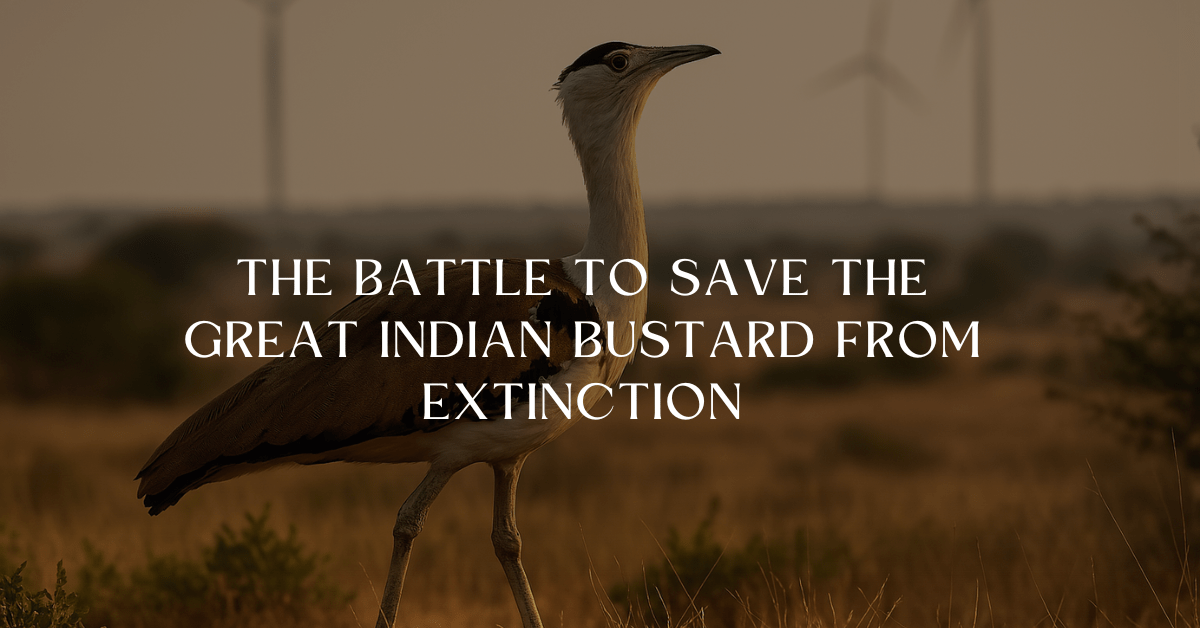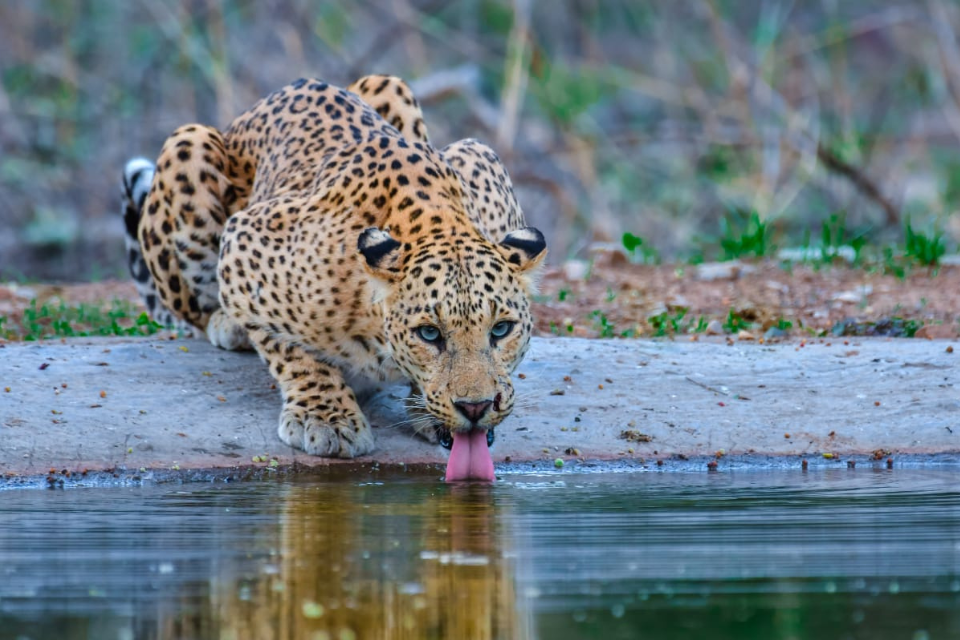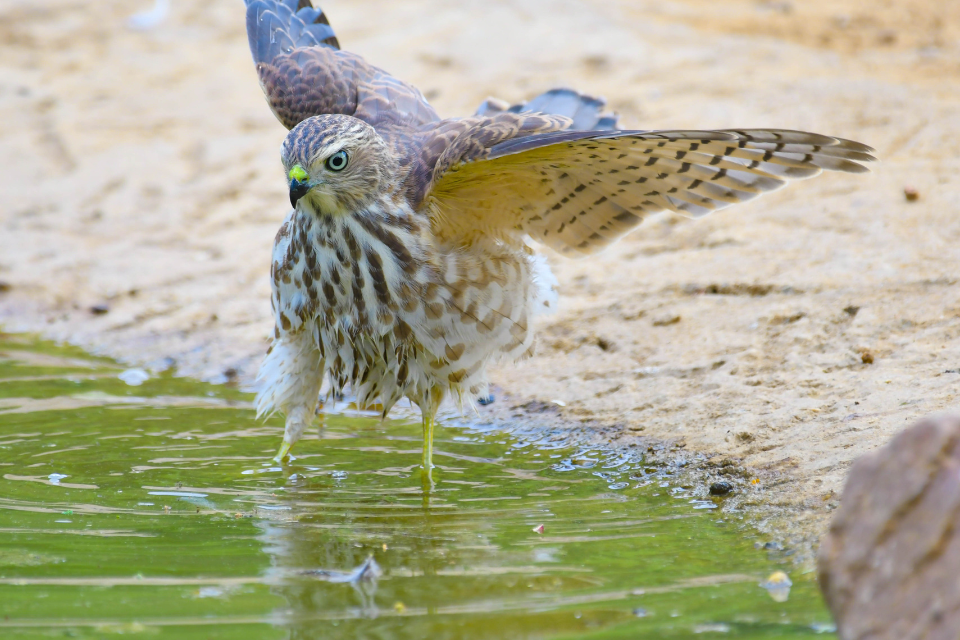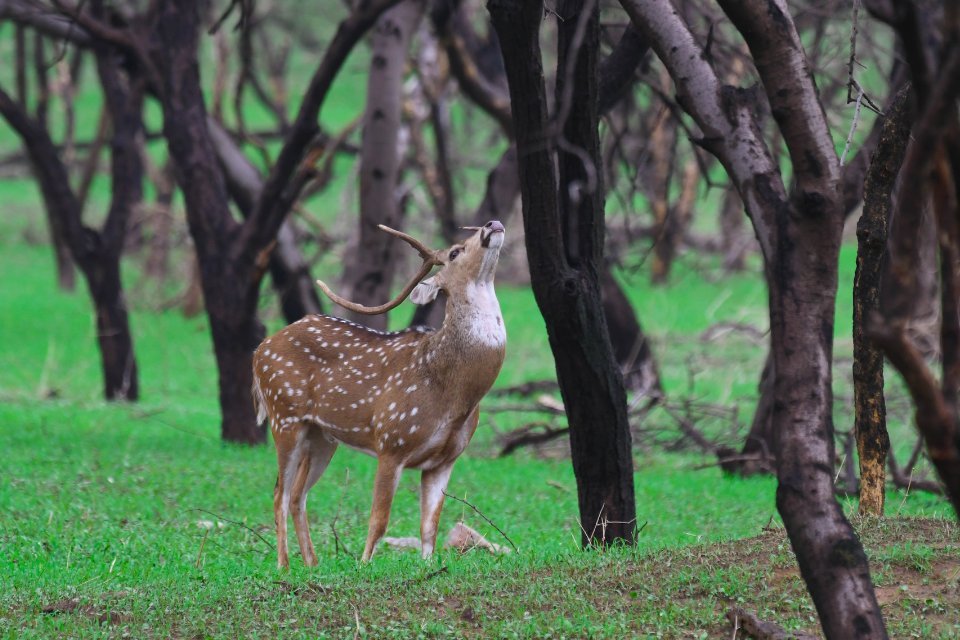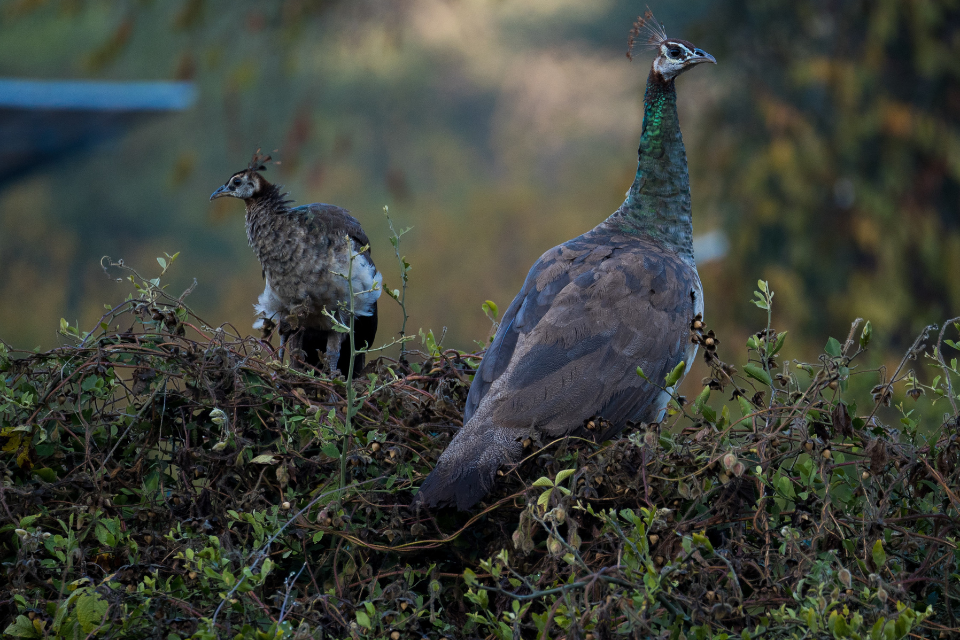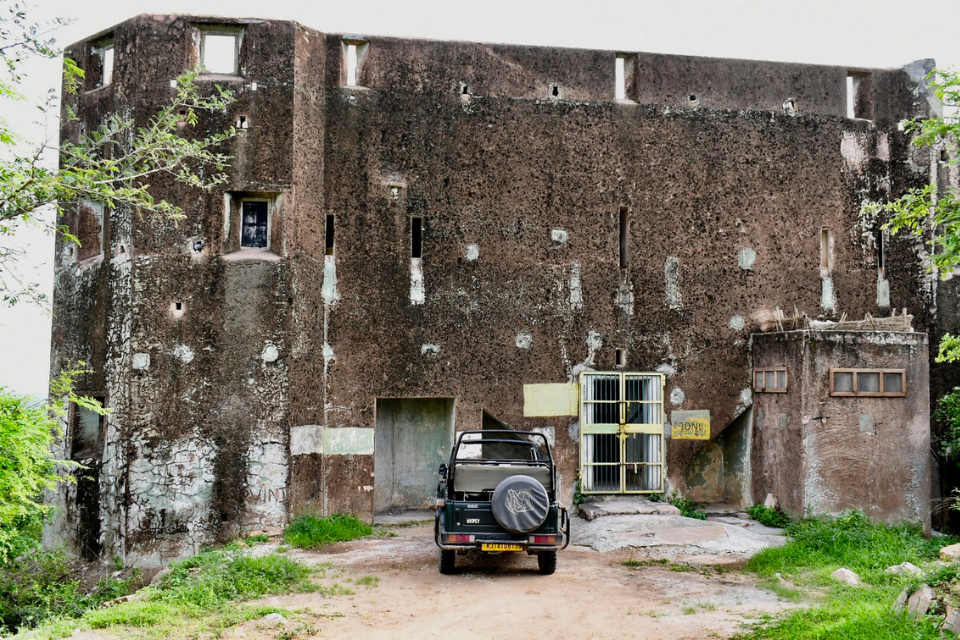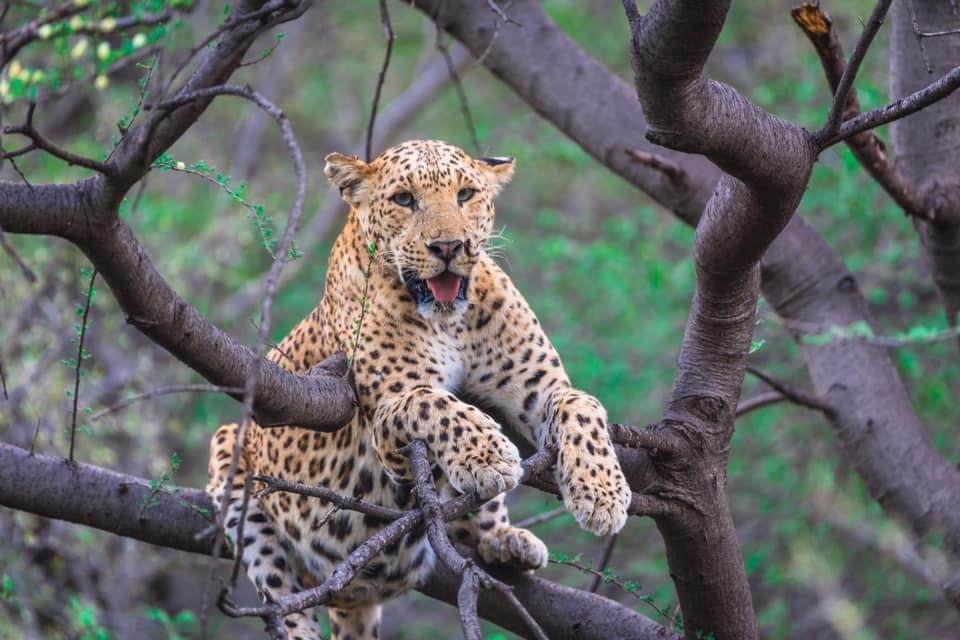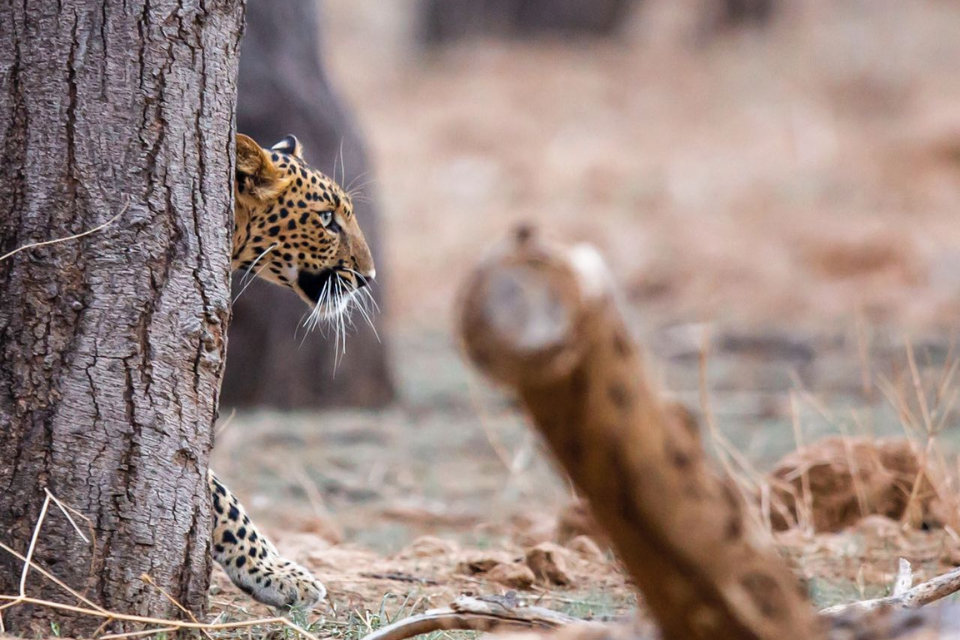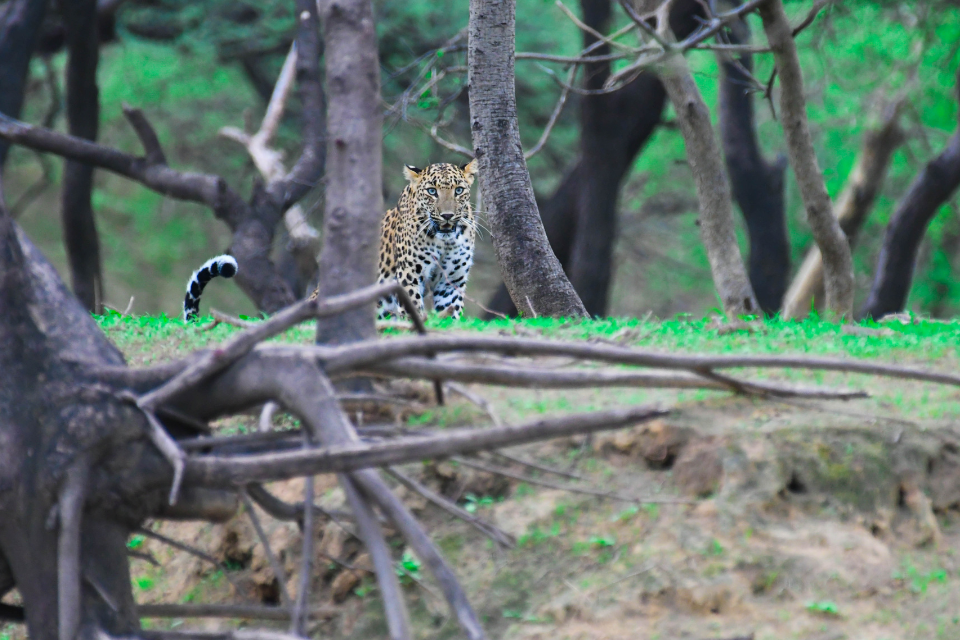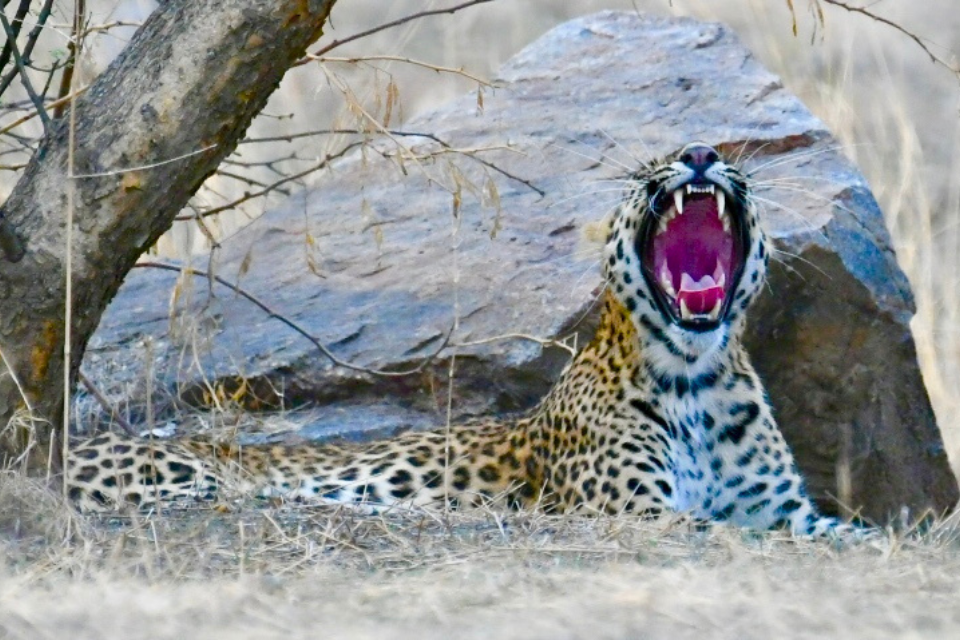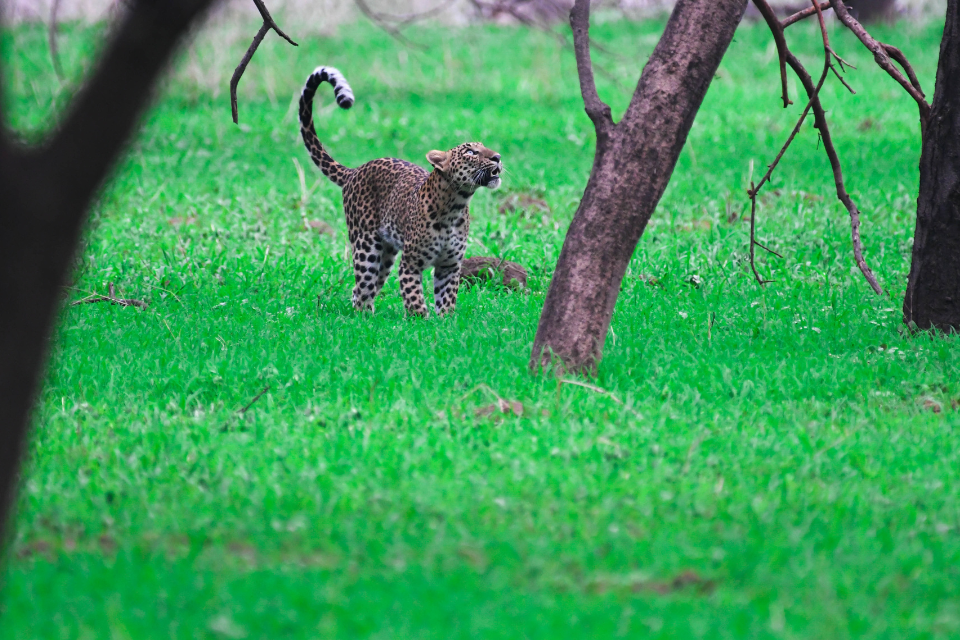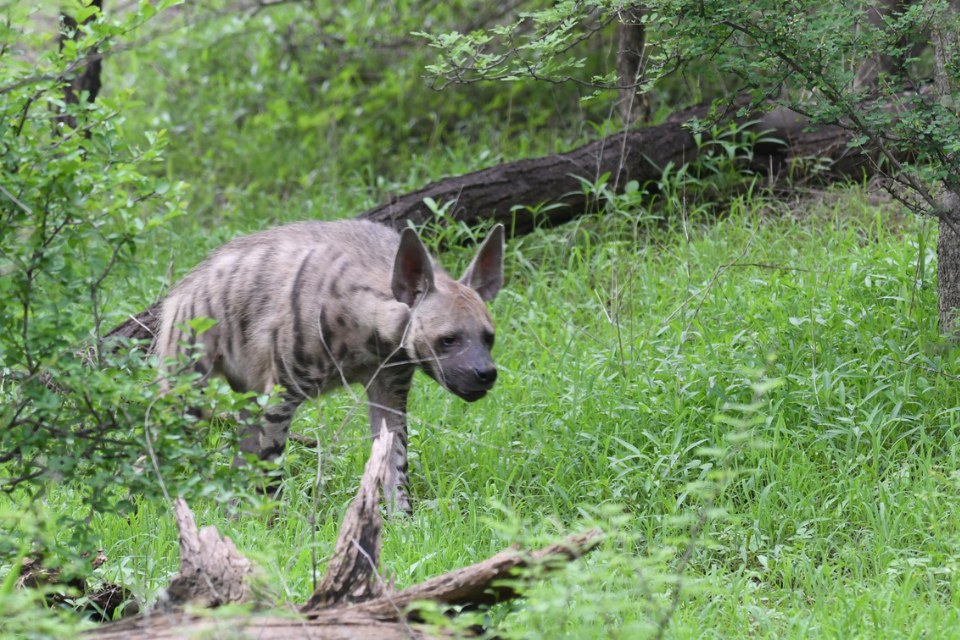- April 19, 2025
The Battle to Save the Great Indian Bustard from Extinction
The Great Indian Bustard (Ardeotis nigriceps), once a common sight across India’s grasslands and dry plains, is now on the verge of extinction. With fewer than 150 individuals left, the species is one of the rarest birds in the world. Rajasthan remains the last stronghold of this majestic bird, hosting over 90% of its remaining population.
Nicknamed “Godawan” in Rajasthan, this bird is India’s heaviest flying bird, standing over 1 meter tall and weighing up to 15 kg. Despite being nominated for India’s national bird, it has been pushed to the brink of extinction due to habitat loss, hunting, and deadly power lines.
Let’s explore why the Great Indian Bustard is disappearing, the efforts to save it from extinction, and what more needs to be done to ensure its survival.
- Why is the Great Indian Bustard Endangered?
The Great Indian Bustard was once found across 11 Indian states, including Rajasthan, Gujarat, Madhya Pradesh, and Maharashtra. Today, it survives only in small pockets of Rajasthan, mainly in the Desert National Park (DNP), Jaisalmer.
The main threats pushing this species toward extinction include:
⚠️ A. Habitat Loss & Land Encroachment
❌ 90% of the Bustard’s grassland habitat has been destroyed due to farming, mining, and urban expansion.
❌ Large-scale industrial projects have converted vast grasslands into roads, wind farms, and solar energy sites.
🚀 Fact: The Bustard prefers open, undisturbed landscapes, but its habitat is shrinking every year.
⚠️ B. Deadly Power Lines – The Silent Killer
❌ High-voltage power lines passing through Bustard habitats are the biggest threat today.
❌ The bird flies low and doesn’t see the cables, resulting in fatal collisions.
🚀 Fact: Studies estimate that 15% of the remaining Bustard population dies every year due to power line collisions.
⚠️ C. Poaching & Hunting in the Past
❌ Historically, the Great Indian Bustard was hunted for meat and sport.
❌ Though hunting is now banned, illegal poaching still occurs in some areas.
🚀 Fact: The bird was once so common that it was considered a delicacy in British India!
⚠️ D. Climate Change & Extreme Weather
❌ Rising temperatures and erratic rainfall are affecting the bird’s food sources.
❌ Frequent droughts in Rajasthan are reducing insect populations, an important food source for Bustard chicks.
🚀 Fact: The Great Indian Bustard lays only 1 egg per year, making population recovery extremely slow.

- Rajasthan – The Last Hope for the Great Indian Bustard
Rajasthan is the last major habitat of the Great Indian Bustard, with the largest population surviving in two main protected areas:
🏞 Location | 📍 District | 🔍 Best Time to Visit |
Desert National Park (DNP) | Jaisalmer & Barmer | November – March |
Sorsan Grasslands | Baran | October – February |
🚀 Best Time for Birdwatching: Early mornings and late afternoons when Bustards are most active.
🚀 Pro Tip: Visit Sudashri Forest Post in Desert National Park for the best chance to spot a Great Indian Bustard.
- Conservation Efforts: Fighting to Save the Bustard
Recognizing the urgent need for action, India and Rajasthan’s wildlife authorities have launched multiple conservation programs to save the Great Indian Bustard from extinction.
🛡️ A. Project Great Indian Bustard
✔ A national conservation program launched in Rajasthan to protect the remaining birds.
✔ Focuses on habitat protection, breeding programs, and reducing power line threats.
✔ Strict anti-poaching laws enforced in Bustard areas.
🚀 Success Story: Desert National Park now has dedicated Bustard protection zones, where human activity is restricted.
🛡️ B. Captive Breeding & Reintroduction Program
✔ A special breeding center has been set up in Rajasthan to hatch and raise Bustard chicks in captivity.
✔ Eggs are collected from the wild, hatched in protected enclosures, and raised in a safe environment before being released into the wild.
🚀 Success Story: The first captive-bred Bustard chicks were successfully raised in 2020, giving hope for the species’ recovery.
🛡️ C. Underground Power Lines Initiative
✔ The Rajasthan government has ordered power lines in Bustard zones to be buried underground to prevent collisions.
✔ Wind energy and solar projects in Bustard habitats are being redesigned to avoid harming the birds.
🚀 Success Goal: The government aims to convert all overhead power lines to underground cables by 2030.
🛡️ D. Community Involvement & Eco-Tourism
✔ Local villagers and farmers are being trained as Bustard conservationists.
✔ Eco-tourism is being promoted to generate income for local communities while protecting the bird.
🚀 Success Story: Local guides in Jaisalmer now educate tourists about the Bustard, making conservation a community effort.
- Challenges in Saving the Great Indian Bustard
Despite conservation efforts, saving the Bustard remains extremely difficult due to:
⚠️ Slow Reproduction Rate – The Bustard lays only one egg per year, making population recovery very slow.
⚠️ Lack of Awareness – Many people don’t know about the bird’s endangered status.
⚠️ Conflict with Renewable Energy – Solar and wind projects need to balance conservation and energy demands.
⚠️ Political & Bureaucratic Delays – Conservation projects often take years to get approvals and funding.
🚀 Solution: Stronger laws, better funding, and more public awareness can speed up conservation efforts.
- How You Can Help Save the Great Indian Bustard
Even if you are not a scientist or conservationist, you can still help protect this incredible bird:
✔ Spread Awareness – Talk about the Bustard’s plight on social media and in local communities.
✔ Support Eco-Tourism – Visit Bustard habitats and support local conservation initiatives.
✔ Report Illegal Activities – If you see poaching or habitat destruction, report it to wildlife authorities.
✔ Donate to Conservation Programs – Support organizations working to save the Bustard.
🚀 Fun Fact: Even small actions—like learning about the Bustard and sharing its story—can help build support for its protection!
- Conclusion: Can We Still Save the Great Indian Bustard?
The Great Indian Bustard is one of India’s most endangered birds, but it is not too late to save it. Rajasthan is the last hope for this species, and conservation efforts are showing signs of success.
✔ Habitat protection, captive breeding, and power line modifications can help increase numbers.
✔ Eco-tourism and local involvement are crucial for long-term conservation.
✔ Stronger laws and awareness can ensure the Bustard’s survival for future generations.
The battle to save the Great Indian Bustard is not just about one bird—it is about preserving India’s grasslands, biodiversity, and ecological balance.
🌍 Have you ever seen a Great Indian Bustard in the wild?
Disclaimer All images used in this blog are either sourced from public domain or credited to their respective owners. If you are the copyright holder of any image and wish to request its removal or proper attribution, please contact us at [email protected]
